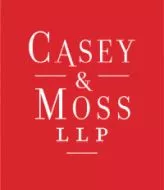- within Litigation and Mediation & Arbitration topic(s)
- within Wealth Management topic(s)
- with Senior Company Executives, HR and Finance and Tax Executives
- with readers working within the Insurance, Healthcare and Property industries
I work all night, I work all day, to pay the bills I have to pay
Ain't it sad?
And still there never seems to be a single penny left for me
That's too bad…
My colleague Rebecca Suggitt previously blogged about the importance of keeping proper accounts as an attorney or guardian of property. One of the reasons she gave was that a guardian or attorney's compensation is tied directly to the receipts and disbursements person under guardianship or attorneyship (who will be referred to as the “incapable person”).
Generally, the rule that applies to a guardian or attorney's compensation is a charge of 3% on all receipts and disbursements in the guardianship or attorneyship accounts, per the regulations under the Substitute Decisions Act, 1992. (For simplicity, I will use the term “fiduciary” to mean “guardian” or “attorney” for the remainder of this blog, but be aware that “fiduciary” is a broader term that is not limited to guardians or attorneys.)
The broad purpose of this 3% charge is to compensate fiduciaries for the work they do to manage the incapable person's assets, such as paying their bills, purchasing necessities and personal items, and collecting and managing money from their sources of income.
However, like many legal principles, there are exceptions to this general rule. There are certain receipts and disbursements that the 3% charge should not be applied to. Below are a few commonly seen non-compensable transactions:
Transfers Between Accounts
People often own more than one bank or investment account. The fiduciary may need to move money from the savings to chequing account to pay the incapable person's monthly bills, or decide to invest the excess funds in chequing account by moving it into an investment vehicle. These transfers will appear in the accounting as a disbursement (when the money leaves the original account) and a corresponding receipt (when the money is deposited into the second account). But, because the money is not leaving the guardianship/attorneyship to pay a third party, nor is new money coming in, these are not compensable transactions. They should be recorded in the accounting bookkeeping or “memo” transactions only.
Refunds
The accounts will reflect refunds, for instance, when items are returned to a store and a credit is issued back to the incapable person. The refunded money will appear in the accounting as a receipt. Since these receipts are not deposits of new money or income, they are not compensable transactions.
Capital Losses
Capital losses occur when an asset is sold for less than its adjusted cost base. The fiduciary may need to liquidate stocks, investments, or other assets because the incapable person needs cash to pay for their expenses. Capital losses appear in the accounting as disbursements. However, they are not true disbursements because no money leaves the guardianship or attorneyship to pay for a good or service. As such, they are non-compensable.
Compensation Paid to the Fiduciary
Fiduciaries are permitted to pay themselves compensation on a monthly, quarterly, or annual basis, pursuant to the Substitute Decisions Act, 1992. If so, the accounts will reflect compensation payments to the fiduciary throughout the period of accounting. As it would be duplicative for the fiduciary to pay themselves for paying themselves, these transactions are non-compensable.
How to Reflect Non-Compensable Transactions in the Calculation for Compensation
The value of these identified non-compensable transactions should be deducted from the value of total receipts and disbursements during the accounting period. After making all deductions, apply the 3% to the net receipts and disbursements to calculate the compensation.
The content of this article is intended to provide a general guide to the subject matter. Specialist advice should be sought about your specific circumstances.
[View Source]

